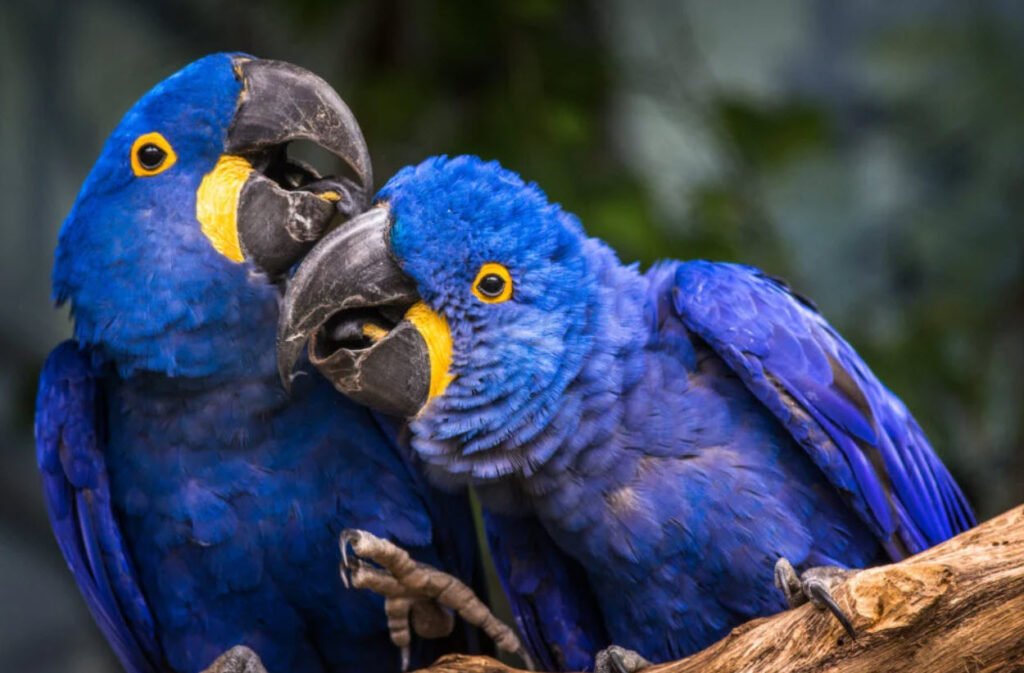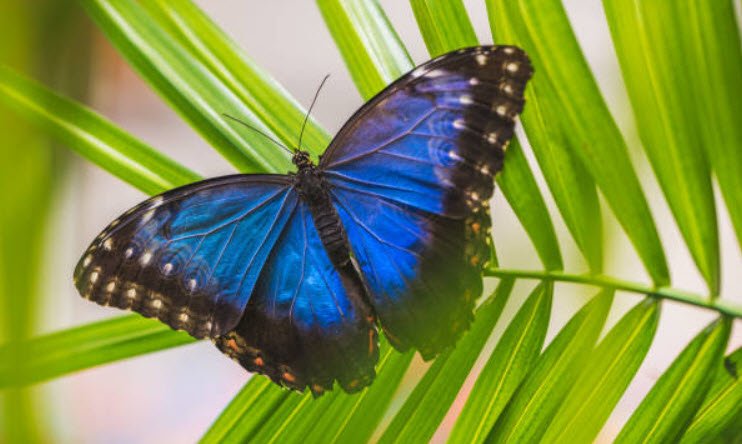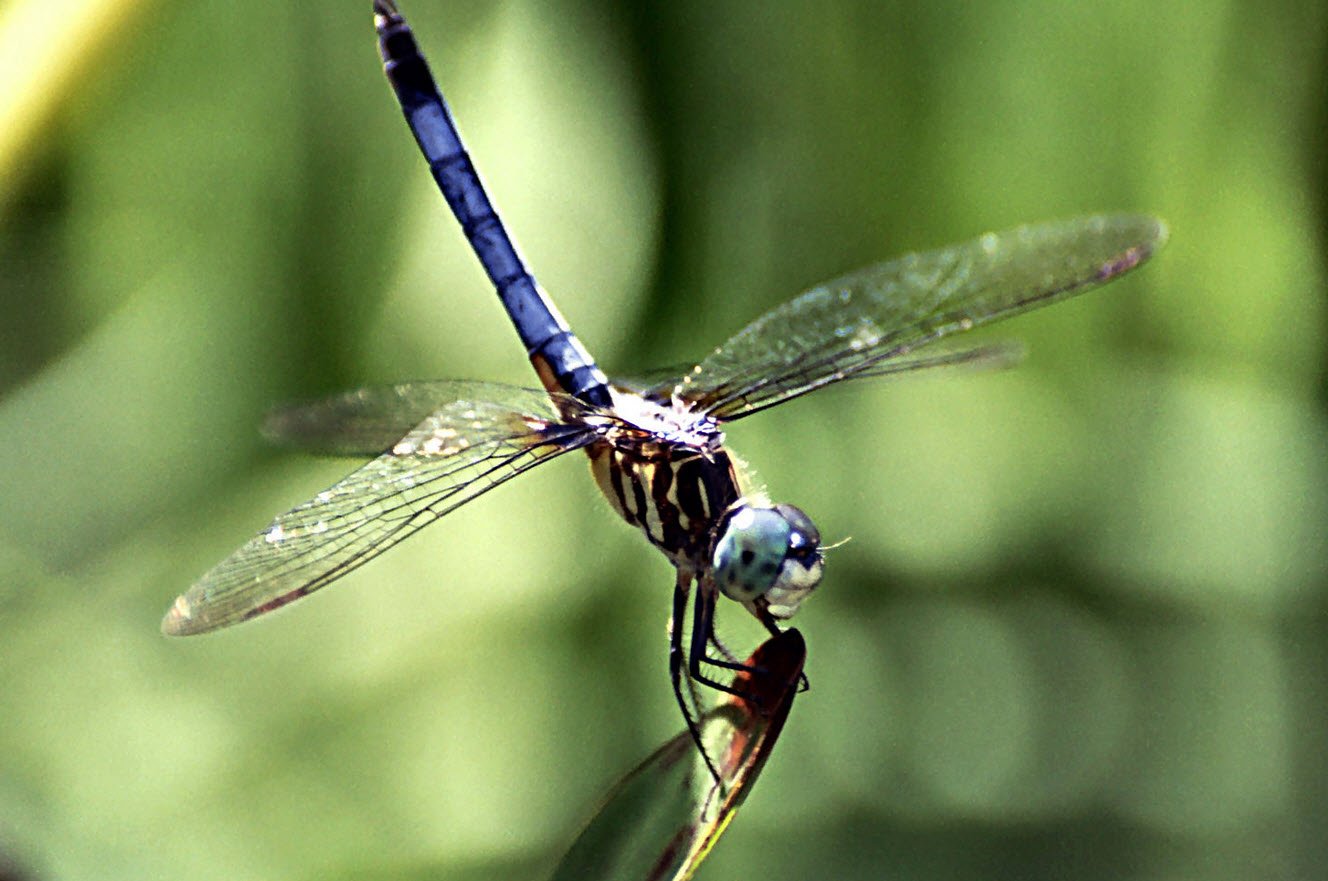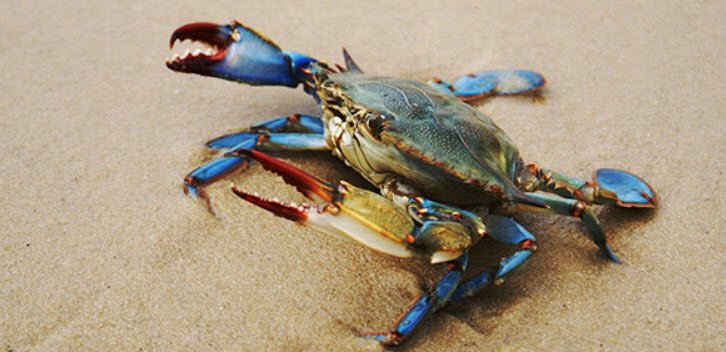
Blue is a captivating and rare color in the animal kingdom, often associated with depth, tranquility, and mystique. While blue is not as common as other hues in the natural world, there are several intriguing creatures that proudly flaunt this beautiful color.
In this article, we will explore a variety of blue animals that span across different habitats, showcasing the diversity of life that comes in shades of blue.
- Blue Jay
- Blue Tang
- Hyacinth Macaw
- Blue Iguana
- Blue Glaucus
- Mandarin Fish
- Blue Poison Dart Frog
- Sinai Agama
- Blue Sea Star
- Menelaus Blue Morpho
- Peacock
- William’s Dwarf Gecko
- Cobalt Blue Tarantula
- Little Blue Heron
- Spix’s Macaw
- Carpathian Blue Slug
- Blue Crayfish
- Blue Ringed Octopus
- Moor Frog
- Betta Fish
- Blue Bottle Fly
- Blue Scorpion
- Blue Dasher
- Chesapeake Blue Crab
- Blue Whale
1. Blue Jay (Cyanocitta cristata)
The Blue Jay, native to North America, is known for its stunning blue feathers, which adorn its wings and tail. These vibrant blue hues make the Blue Jay a delightful sight in forests and parks, and they are known for their intelligence and distinctive calls.

2. Blue Tang (Paracanthurus hepatus)
The Blue Tang, popularized by the movie “Finding Nemo,” is a dazzling marine fish. Its vivid electric blue body with black markings makes it a sought-after choice in the aquarium trade. Blue Tangs are found in the Indo-Pacific region and are characterized by their prominent bright blue coloration.

3. Hyacinth Macaw (Anodorhynchus hyacinthinus)
The Hyacinth Macaw, the largest of the macaw species, is native to central and eastern South America. Its stunning cobalt blue plumage is one of its most striking features, making it a highly prized and endangered species.

4. Blue Iguana (Cyclura lewisi)
The Blue Iguana, native to Grand Cayman, is a critically endangered species known for its distinctive blue skin. Their striking blue coloration serves as a unique characteristic and sets them apart from other iguanas.

5. Blue Glaucus (Glaucus atlanticus)
The Blue Glaucus, also known as the “blue dragon,” is a captivating sea slug found in oceans across the globe. Despite being small in size, their mesmerizing blue and silver coloration and intricate patterns make them a wonder to behold.

6. Mandarin Fish (Synchiropus splendidus)
The Mandarin Fish is a small, brightly colored fish found in the Pacific Ocean. Its vibrant blue and orange patterns make it a favorite among aquarium enthusiasts.

7. Blue Poison Dart Frog (Dendrobates tinctorius azureus)
The Blue Poison Dart Frog, native to the rainforests of Suriname, is a brilliantly blue-colored amphibian. Its striking blue hue serves as a warning to potential predators, as the frog carries potent neurotoxins in its skin.

8. Sinai Agama (Pseudotrapelus sinaitus)
The Sinai Agama, found in the Sinai Peninsula, is a lizard known for its iridescent blue coloration. Males display bright blue hues during the breeding season, making them particularly vibrant and attractive.

9. Blue Sea Star (Linckia laevigata)
The Blue Sea Star, commonly found in coral reefs, displays a mesmerizing blue coloration. This marine creature adds a splash of color to the ocean floor with its radiant blue arms.

10. Menelaus Blue Morpho (Morpho menelaus)
The Menelaus Blue Morpho is a large butterfly with vibrant blue wings found in Central and South America. Its shimmering wings are a marvel of nature, making it a popular subject of fascination and study.

11. Peacock (Pavo cristatus)
The peacock, though renowned for its elaborate display of feathers, also features a distinctive blue neck and head. The iridescent blue plumage adds to the peacock’s overall majestic appearance.

12. William’s Dwarf Gecko (Lygodactylus williamsi)
William’s Dwarf Gecko is a small reptile indigenous to Tanzania. Its striking turquoise blue coloration sets it apart and has made it a prized species in the exotic pet trade.

13. Cobalt Blue Tarantula (Haplopelma lividum)
The Cobalt Blue Tarantula is a magnificent arachnid native to Myanmar and Thailand. Its deep cobalt blue coloration makes it a highly sought-after species in the tarantula enthusiast community.

14. Little Blue Heron (Egretta caerulea)
The Little Blue Heron, as the name suggests, is a wading bird with bluish-gray plumage. Its elegant appearance and striking color make it a captivating sight in wetlands and coastal areas.

15. Spix’s Macaw (Cyanopsitta spixii)
Spix’s Macaw, also known as the Little Blue Macaw, is an endangered parrot species from Brazil. It is characterized by its predominantly blue plumage, adding a touch of vividness to the tropical rainforests.

16. Carpathian Blue Slug (Bielzia coerulans)
The Carpathian Blue Slug, found in Eastern Europe, is a unique gastropod mollusk known for its distinct blue coloration. These slugs inhabit damp forested areas and add a burst of color to their surroundings.

17. Blue Crayfish (Procambarus alleni)
The Blue Crayfish, also known as the Electric Blue Crayfish, is a freshwater crustacean popular in the aquarium trade due to its vibrant blue coloration. It’s a fascinating addition to home aquariums.

18. Blue Ringed Octopus (Hapalochlaena sp.)
The Blue Ringed Octopus, though small, is one of the world’s most venomous marine creatures. It derives its name from the vibrant blue rings that appear on its body when threatened or agitated.

19. Moor Frog (Rana arvalis)
The male Moor Frog is known for its stunning blue coloration during the breeding season. This temporary transformation helps attract mates and is a marvel of natural adaptation.

20. Betta Fish (Betta splendens)
The Betta Fish, often called Siamese Fighting Fish, comes in various vibrant colors, including shades of blue. Their captivating and flowing fins add to their visual appeal.

21. Blue Bottle Fly (Calliphora vomitoria)
The Blue Bottle Fly is a common insect found in many parts of the world. It gets its name from its iridescent blue-green coloration, making it easily identifiable.

22. Blue Scorpion (Heterometrus cyaneus)
The Blue Scorpion is a scorpion species found in Southeast Asia. Its deep blue exoskeleton sets it apart from other scorpion species and adds to its intrigue.

23. Blue Dasher (Pachydiplax longipennis)
The Blue Dasher is a dragonfly species native to North and Central America. Its vibrant blue coloration and darting flight patterns make it an interesting and eye-catching insect.

24. Chesapeake Blue Crab (Callinectes sapidus)
The Chesapeake Blue Crab, native to the western Atlantic Ocean and Gulf of Mexico, is well-known for its bluish hue and is a vital species in the region’s seafood industry.

25. Blue Whale (Balaenoptera musculus)
The Blue Whale, the largest animal on Earth, gets its name from its bluish-gray coloration. Despite its enormous size, these gentle giants feed on tiny shrimp-like animals called krill.

In conclusion, the world of blue animals is a captivating and diverse one, showcasing nature’s ability to manifest a stunning array of colors. Whether it’s the vibrant plumage of birds, the mesmerizing patterns of sea creatures, or the vivid hues of insects and amphibians, the presence of blue in the animal kingdom adds to the beauty and wonder of our planet.
You may also like:- Top 30 Animals Starting With the Letter W
- 15 Poisonous Plants That Pose a Threat to Pets
- 12 Notable Oklahoma’s Diverse Wildlife Animals
- Top 24 Hybrid Animals – Nature’s Fascinating Blends
- Top 20 Tiny Insects – See Photos
- Top 30 Must-See Different Species of Mammals in the World
- Top 24 Fascinating Australian Animals – With Photos
- Top 4 – World’s Fastest And Slowest Land Animals
- List of 25+ Common Wild Animals with Pictures
- The Fascinating World of Black & White Animals








